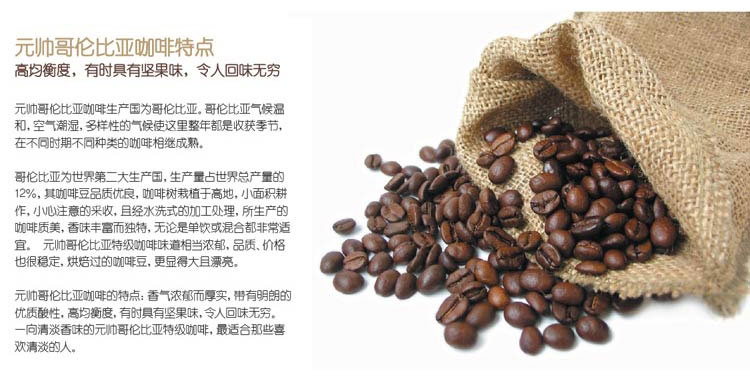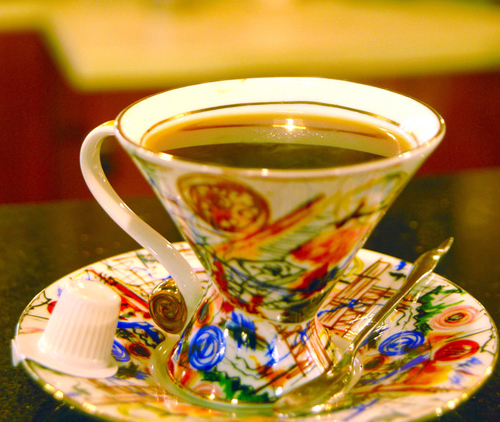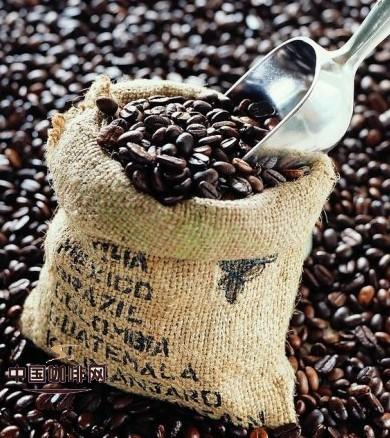Boutique coffee beans: details of Colombian producing areas and coffee beans
Columbia Coffee (Cafe de Colombia) is one of the few individual coffees sold under the name of a country in the world, and it is also a successful example of the successful combination of geographical indications and brand image.
In December 2004, the Colombian Coffee producers Association (FNC) applied to the Government of Colombia for registration of the geographical indication "Caf é de Colombia" (Colombian Coffee).
Three months later, the Colombian government approved "Caf é de Colombia" as "appellation of origin-geographical indication (D.O.-G.I.)". As a result, this logo has also become the official symbol of the Colombian Coffee producers Association.
Not only that, it has also won praise unmatched by other coffee in terms of quality. Compared with other producing countries, Colombia is more concerned with developing products and promoting production. It is this, coupled with its superior geographical and climatic conditions, that makes Colombian coffee excellent in quality and delicious and famous all over the world.
Colombian coffee is located in the Andes, where the mild climate, humid air and good rainfall make it very suitable for coffee growth. according to its geographical location, Colombian coffee is divided into three producing areas: northern, central and southern, in which there are six high-quality coffee producing areas in Colombia, Sierra Nevada, Santander, Cauca, Huila, Nari ñ o and Paisaje cultural cafetero.
The northern Sierra Nevada producing area is one of the high quality producing areas in Colombia, and the Santa Marta Snow Mountains is one of the few snowy mountains on the equator, and its caffeine is famous for its distinctive characteristics and high quality standards. The unique climate, abundant precipitation, cloud cover and shade planting make the coffee here full-bodied and nutty, giving people a unique sensory experience.
The north-central Santander producing area consists of two major geographical areas: the Magdalena Basin and the mountains of the eastern mountains. The Magdalena basin is relatively flat, with a dry and hot climate in the central plain. The eastern mountains have rugged terrain and steep slopes with an altitude of up to 4000 meters. The climate is affected by different elevations, which makes it show a variety of meteorological zones, resulting in a rich aroma of coffee and moderate acidity. Smooth and consistent with tobacco flavor.
Huila is located in southern Colombia, one of the well-known specialty coffee producing areas, with an altitude of about 1200 to 2020 meters, a planting area of more than 1.3 million hectares and an average temperature of between 17 and 23 °C. Because of its outstanding flavor and aroma, it has become a world-famous special coffee. Medium acidity and moderately mellow, with charming sweetness and lemon wine acid, a balanced and pure aftertaste, it is often selected by major coffee competitions in recent years.

Source: Mavericks blog
Important Notice :
前街咖啡 FrontStreet Coffee has moved to new addredd:
FrontStreet Coffee Address: 315,Donghua East Road,GuangZhou
Tel:020 38364473
- Prev

Boutique coffee beans: what is Japanese charcoal roasted coffee? How do you make charcoal coffee?
What is charcoal coffee? As one of the three largest drinks in the world, coffee is very diverse, such as Blue Mountain, Mantenin, Mocha, Cappuccino, Latte and so on. The following is to introduce the charcoal-roasted coffee in the coffee family, and let's learn what charcoal-fired coffee is and how to make it. What is charcoal coffee? Charcoal roasted coffee is a single cup of coffee classified in Japan.
- Next

Boutique coffee beans: an introduction to 90 + boutique coffee looking forward to the future coffee world
Juliet (Juliette H2): [Origin]: 90 + Panamanian Rosa Manor, [season]: 2013 to 2014 [Variety]: Rosa [Level]: 39 [altitude]: 1250m-1650m [treatment]: honey treatment [flavor]: rose summer seed flavor on the basis of its own rich floral flavor, the entrance taste will be orange peel, caramel, dried cashew fruit flavor.
Related
- Guji coffee producing area of Guji, Ethiopia: Humbela, Shakiso, Wulaga
- What is the most expensive variety of Qiloso in BOP multi-variety group?
- How to store the coffee beans bought home?
- Why are Yemeni coffee beans so rare now?
- Ethiopian Sidamo all Red Fruit Sun Sun Santa Vini Coffee beans
- SOE is mostly sour? What does it mean? Is it a single bean? what's the difference between it and Italian blending?
- Is Italian coffee beans suitable for making hand-brewed coffee?
- How to choose coffee beans when making cold coffee? What kind of coffee beans are suitable for making cold coffee?
- Just entered the pit to make coffee, what kind of coffee beans should be chosen?
- Can only Japan buy real Blue Mountain Coffee? What are authentic Jamaican Blue Mountain coffee beans?

